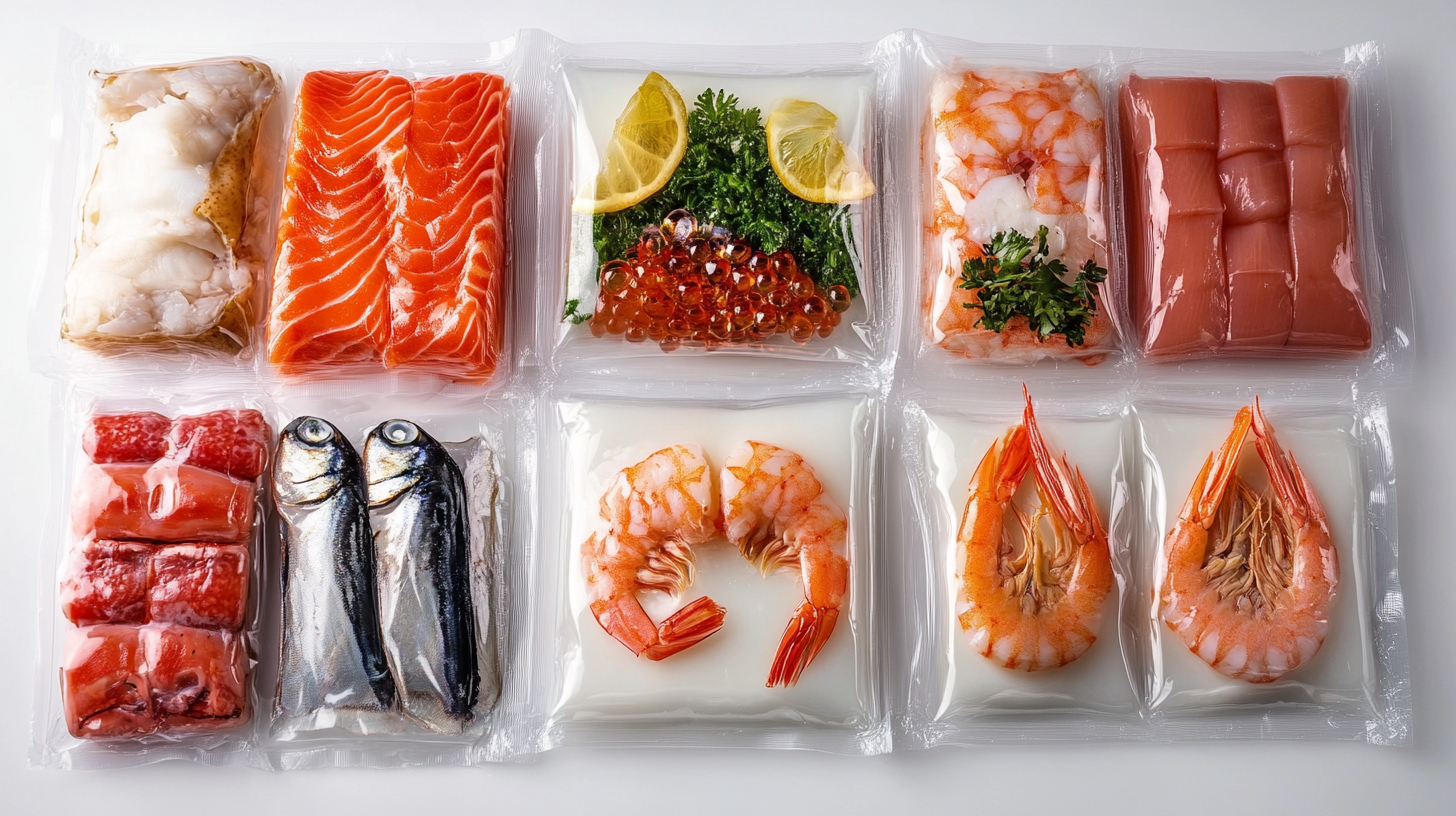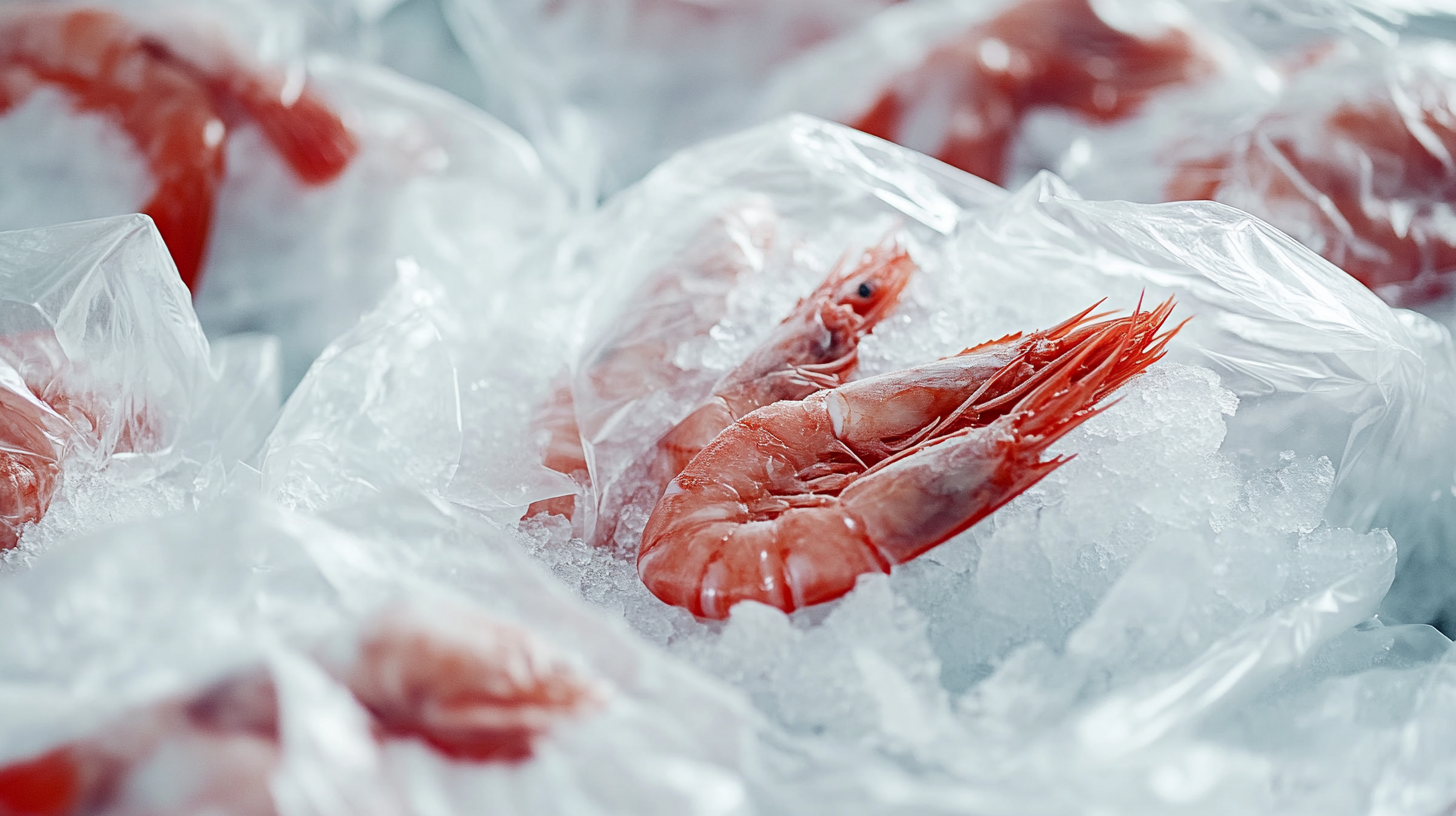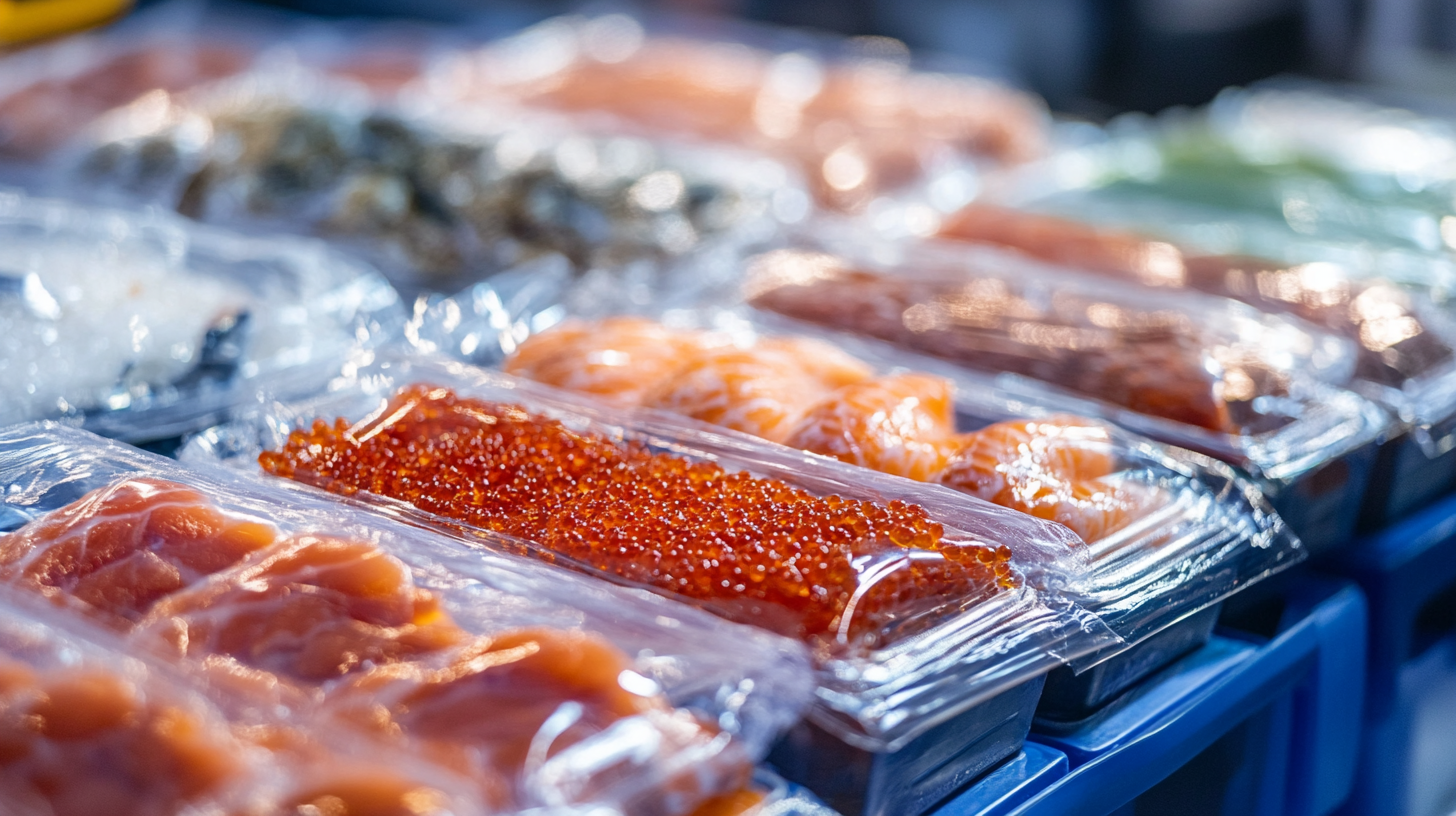Future Trends in Frozen Seafood Packaging Innovations and Solutions for Global Buyers 2025
The global frozen seafood packaging market is poised for transformative innovations and solutions by 2025, driven by increasing consumer demand for sustainable and convenient food options. According to a recent market report, the frozen seafood packaging segment is expected to reach a valuation of approximately $XX billion, growing at a CAGR of YY% over the next few years. This growth is facilitated by advancements in technology and a rising emphasis on enhancing product shelf life while maintaining quality. Additionally, industry standards and import-export certifications are becoming increasingly stringent, ensuring that global buyers receive high-quality products. As digital technologies continue to reshape the supply chain, the frozen seafood packaging landscape is evolving to meet the dynamic needs of consumers and businesses alike, setting the stage for a future where innovation and sustainability converge in this vital sector.

Future Packaging Materials: Eco-Friendly Innovations and Sustainability in Frozen Seafood
 As we move towards 2025, the frozen seafood packaging industry is witnessing remarkable innovations aimed at embracing sustainability. Eco-friendly materials are at the forefront, with biodegradable plastics, compostable films, and recycled packaging becoming increasingly popular. These advancements not only meet the demands of environmentally conscious consumers but also reduce the ecological footprint of seafood products throughout their supply chain.
As we move towards 2025, the frozen seafood packaging industry is witnessing remarkable innovations aimed at embracing sustainability. Eco-friendly materials are at the forefront, with biodegradable plastics, compostable films, and recycled packaging becoming increasingly popular. These advancements not only meet the demands of environmentally conscious consumers but also reduce the ecological footprint of seafood products throughout their supply chain.
Tip: When choosing packaging for frozen seafood, consider materials that are certified for compostability or made from 100% recycled content to align with sustainability goals while attracting eco-aware buyers.
Moreover, innovations like vacuum packaging and modified atmosphere packaging (MAP) techniques enhance the shelf-life of frozen seafood while minimizing food waste. These technologies ensure that seafood retains its freshness and quality during transportation and storage, which is crucial for global buyers in maintaining product integrity.
Tip: Buyers should stay informed about the latest packaging technologies that extend shelf life and improve product safety to make smarter purchasing decisions that support sustainability and quality.
Emerging Technologies: Smart Packaging Solutions for Enhanced Seafood Safety and Freshness
Innovative smart packaging solutions are at the forefront of the frozen seafood industry, addressing the growing demand for enhanced safety and freshness. According to a recent report by MarketsandMarkets, the smart packaging market is projected to reach $41.7 billion by 2026, driven primarily by advancements in food safety regulations and consumer expectations for transparency. The incorporation of sensors and RFID technology into seafood packaging not only ensures optimal temperature control but also provides real-time monitoring of product conditions, alerting retailers and consumers of any deviations that could compromise quality.
Additionally, initiatives focusing on sustainable and recyclable packaging materials are gaining traction. A study by Grand View Research indicates that the global seafood packaging market is expected to grow at a CAGR of 5.3% from 2022 to 2030. Eco-friendly options such as biodegradable films and smart labels that utilize QR codes to share sourcing and expiry information are becoming increasingly important. These advancements not only enhance product appeal but also align with the growing consumer preference for environmentally responsible products, further driving innovations in the frozen seafood packaging landscape.

Regulatory Challenges: Navigating Global Standards and Compliance for Frozen Seafood Packaging
Navigating the regulatory landscape for frozen seafood packaging is increasingly challenging for global buyers. According to the Food and Agriculture Organization (FAO), the seafood market is projected to reach $200 billion by 2025, highlighting the importance of compliance with international standards. Countries such as the United States and members of the European Union impose rigorous packaging regulations to ensure food safety and consumer protection. For instance, the FDA enforces strict guidelines on materials that come into direct contact with food, which necessitates that packaging solutions not only protect product integrity but also meet environmental sustainability standards.
Moreover, the International Organization for Standardization (ISO) continues to develop global standards for seafood packaging, which requires producers and suppliers to stay abreast of any changes. A recent report by Transparency Market Research indicates that 68% of seafood businesses identify regulatory compliance as a major concern when selecting packaging materials. As buyers prioritize sustainable practices, they must consider certifications such as the Global Packaging Standard or the Marine Stewardship Council’s (MSC) eco-labeling to ensure that their packaging choices align with the best practices outlined in these regulations. Adapting to these requirements while innovating packaging solutions will be crucial for businesses looking to thrive in this competitive landscape.
Future Trends in Frozen Seafood Packaging Innovations and Solutions for Global Buyers 2025 - Regulatory Challenges: Navigating Global Standards and Compliance for Frozen Seafood Packaging
| Dimension | Current Trends | Future Innovations (2025) | Regulatory Challenges | Solution Strategies |
|---|---|---|---|---|
| Materials | Plastic films, Styrofoam | Biodegradable plastics, Edible coatings | Varied standards across regions | Engagement in global coalitions |
| Sustainability | Limited recyclable options | 100% recyclable or reusable packaging | Compliance with eco-labeling regulations | Adoption of standardized certifications |
| Technology | Basic tracking systems | Smart packaging with IoT sensors | Data privacy regulations | Implementing robust cybersecurity measures |
| Shelf Life | Traditional methods | Active packaging to extend freshness | Approval processes for new materials | Collaboration with regulatory bodies |
| Consumer Preferences | Focus on convenience | Customization and personalization of packages | Labeling compliance | Educational campaigns on regulations |
Consumer Preferences: Understanding Trends in Frozen Seafood Packaging from a Buyer’s Perspective
As the global frozen foods market continues to expand, reaching a valuation of USD 363.7 billion by 2028, innovations in frozen seafood packaging are increasingly important to meet buyer preferences. Current trends indicate a growing consumer demand for sustainable and convenient packaging solutions. Studies show that buyers are leaning towards packaging that not only preserves the quality of seafood but also minimizes environmental impact. This shift towards eco-friendly materials is influenced by heightened consumer awareness and a desire for products that align with sustainable practices.
Understanding consumer preferences is pivotal for manufacturers aiming to capture this dynamic market. Research indicates that 68% of consumers prefer packaging that offers resealability and easy storage options. Additionally, advancements in technologies arising from the fourth industrial revolution are playing a crucial role in enabling these innovations, enhancing packaging efficiency, and improving shelf life. By adapting to these trends, global buyers are not only meeting immediate consumer demands but also contributing to a long-term sustainable food system.
Cost Efficiency: Analyzing Economic Solutions for Manufacturers in the Frozen Seafood Sector
As the frozen seafood sector faces increasing pressures from rising operational costs and environmental compliance, manufacturers are pivoting towards cost-efficient solutions to maintain profitability. According to a report by MarketsandMarkets, the global frozen seafood market is projected to reach USD 52.82 billion by 2025, indicating a significant demand for innovative packaging that not only preserves product quality but also reduces costs. One approach manufacturers are adopting is the use of biodegradable and multi-layered packaging that enhances shelf life while minimizing waste. These advancements can help manufacturers reduce costs associated with product spoilage and returns.
Furthermore, the push for automation in packaging processes is another avenue many companies are exploring. A study by Grand View Research reveals that the automated packaging market is set to witness a CAGR of 14.1% from 2021 to 2028, indicating a strong trend towards technologies that streamline production lines, minimize labor costs, and elevate operational efficiency. Such innovations not only contribute to immediate cost savings but also align with global sustainability initiatives, crucial for appealing to environmentally conscious consumers. In an industry where margins are tight, embracing these economic solutions can position manufacturers competitively in the fast-evolving global seafood market.
Future Trends in Frozen Seafood Packaging Innovations
This chart illustrates the projected cost efficiency trends in frozen seafood packaging solutions for global buyers by 2025. The data showcases the anticipated percentage changes in cost efficiency for various packaging materials and technology enhancements.

 中国
中国